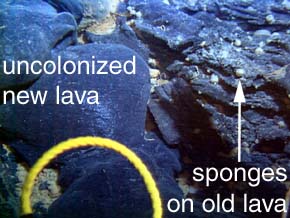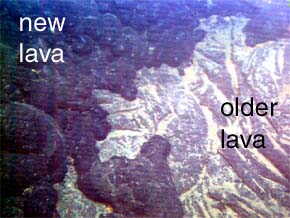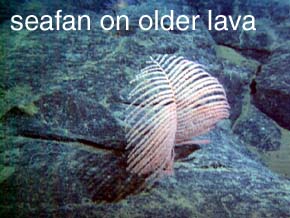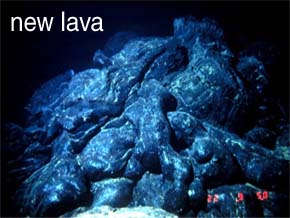



 |
 |
 |
 |
|
Lava
contacts
|
|
A place where different age lava flows meet is called a lava contact. In active volcanic areas such as Axial Seamount, it is typical to encounter lava flows of various ages. Compared to older lavas, new lava flows have shinier and darker surfaces, and have less sediment accumulated on them deposited from the ocean above. However, sediment can also come from hydrothermal vents or microbial activity and sometimes it is hard to tell young from old lavas just from their surficial appearance. In these cases, biological indicators often provide help in determining the relative age of lava flows, based on the presence or absence of specific deep-sea animals and knowing how long they take to colonize new seafloor. |
|
 |
 |
| When a brand new lava flow erupts it is biologically barren and a "blank slate" until it is colonized by vent or non-vent species. Vent species (animals that are dependent on hydrothermal vents to survive) can colonize new lava flows much faster than non-vent species. Sessile non-vent animals, such as seafans, sponges, and some crinoids are stalked and attached to the seafloor and cannot move. They filter out food from seawater are very sparsely distributed. They colonize new areas very slowly and take many years to grow. Thus if sessile, non-vent animals are present on a lava flow, it is at least years if not decades old. Newly erupted lava flows do not have any of these animals growing on them. | |
 |
 |
|
Related
video clips: Related
Virtual Sites: Other
NeMO-related concepts: |
| NeMO Home |About NeMO | Expeditions | NeMO Net | Explore | Dive! | Education |